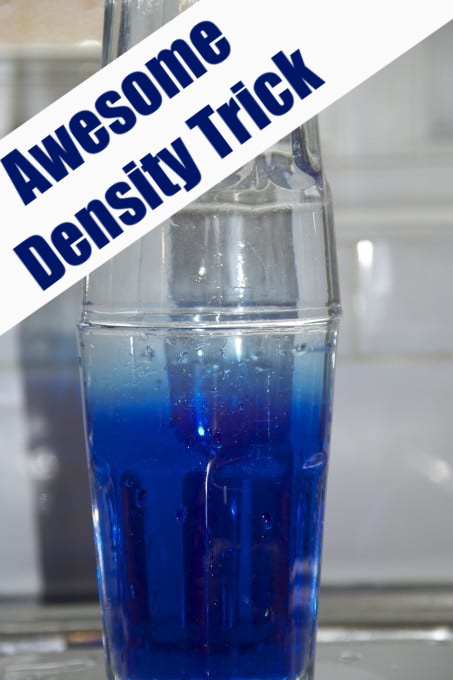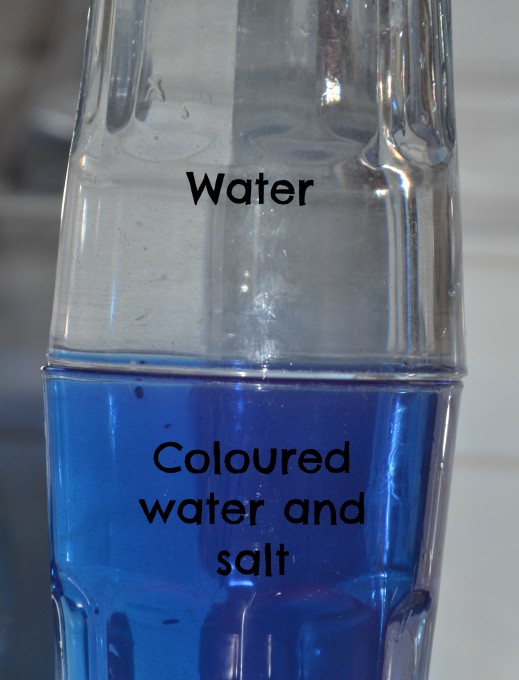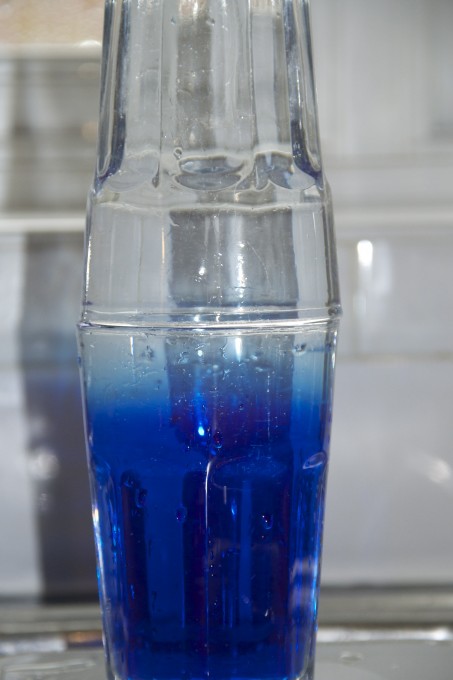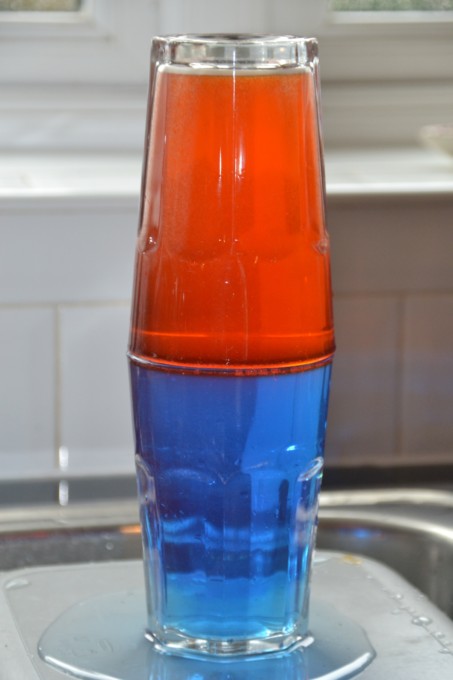This activity is a bit tricky and possibly very messy, but also a fun way to learn about density.
Adding salt to water increases its density, so the less dense plain water sits on top. The two don’t mix.
What you need
- Two glasses of the same size
- A piece of card
- Food colouring
- Salt
- Water
Salt Water Density Trick Instructions
- Fill both glasses with water right up to the brim.
- Add food colouring and salt to one glass and stir well. I didn’t measure the salt but added a generous amount.
- Put the card over the glass containing just water and carefully place it over the glass of coloured water and salt.
- Even more carefully remove the cardboard.
Why doesn’t the water mix?
The salty water has a higher density than the plain water, and so stays at the bottom.
You can see here what happens if you don’t add the salt. The plain water mixes with the coloured water.
If you put the salt water on top, it all mixes, this is because the dense salt water tries to move down to the bottom.
I would recommend doing this science trick over a sink, or somewhere you don’t mind getting wet.
Mom to Posh Little Divas did an activity last week with water and a card where you can lift a glass of water up and the card stays stuck to it. This is a brilliant demonstration of air pressure and would be great to do at the same time as this activity.
More density examples
Make a creepy density jar for Halloween.
Find out how to make a water balloon sink
Discover why apple bobbing works
Try an easy floating and density trick.
Finally, try some sinking and floating to learn about density.
What’s your favourite density trick?

Last Updated on November 20, 2022 by Emma Vanstone






Oh I shall do this with my boys – they will be very impressed I think. But need a time when youngest isn’t about I think. Thank you for sharing, not only the idea, but the science behind it.